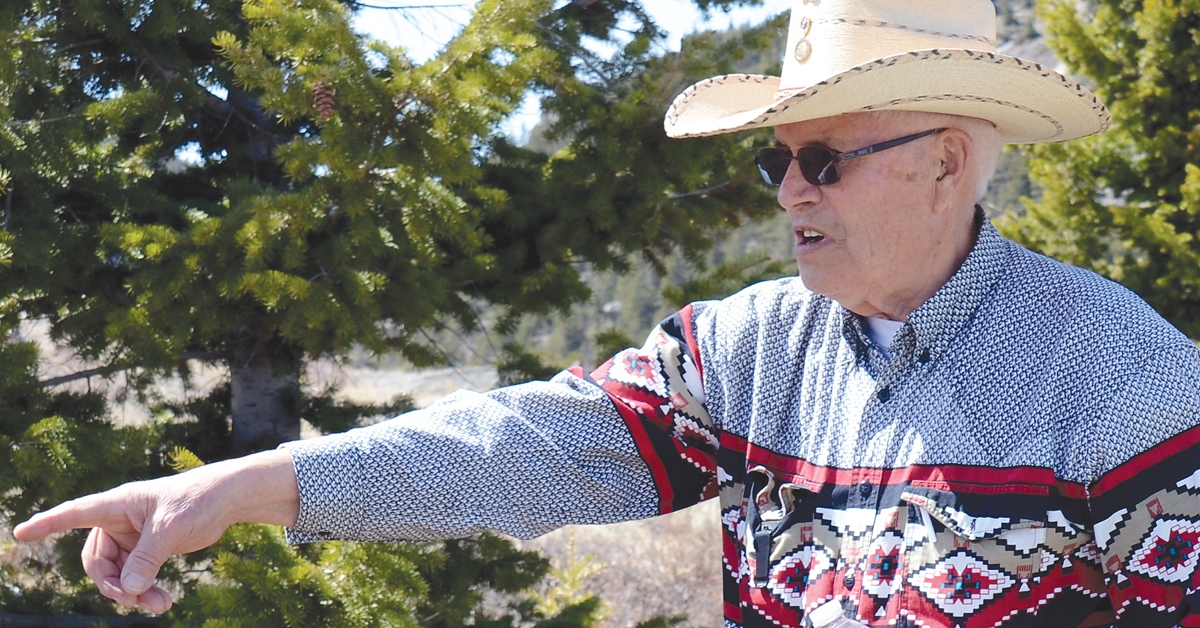Some historians learn by studying, and others learn by doing. Al Wiseman is one of the latter.
Spending time with Wiseman along the Old North Trail is a history lesson unlike any other. It’s been my very good fortune to have done this a couple of times, and those days created memories I will always treasure.
Wiseman has a long history with the trail, a history that in some respects goes back hundreds of years. The history of the Old North Trail itself goes back much farther, about 12,000 years.
The Oldest Trail
It is most likely the oldest trail in the Americas. Wiseman has made it his mission to keep the memory of the trail alive and to protect portions of the trail in the vicinity of Choteau and Dupuyer.
Wiseman is a Metis (pronounced may-tee), a French word meaning to have a mixed racial heritage. Many of the area’s early trappers were from France, and, in their quest for fur-bearing animals, they would meet and marry Native American women, many of which were Chippewa-Cree.
Wiseman’s mother was Chippewa-Cree and his father German.
Honoring His Grandparents
An old cemetery alongside the trail west of Choteau is where Wiseman’s great grandparents lie. His great grandfather died in 1909, and his great grandmother passed in 1890.
Wiseman, now in his 80s, has maintained that cemetery for many years in honor of his grandparents.
The trail has been in use in more recent times as well. Wiseman remembers stories his parents told, which date as recently as the late 1920s.
They are stories of Metis traveling the trail between Canada and the Blackfeet Reservation to attend fiddle dances. Soon after homesteaders moved in and built fences crossing the trail, making traveling the trail ever more difficult.
The Metis
The Metis came primarily from the Great Lakes region but moved slowly westward, arriving and settling around 1870 in the canyons of the Rocky Mountain front in what is now Montana.
Wiseman’s grandparents were part of that migration and made a home in these canyons, where they found the Old North Trail.
This family connection caused Wiseman to devote enormous amounts of time to protecting the trail, promoting information about it and its lengthy history.
A Trail Winding Through History
Montana folks should be aware of the Old North Trail as it crosses the state in a north-south direction, dropping from the Canadian border through the Blackfeet Reservation and southward along the eastern face of the Rockies.
Some people theorize that an ice bridge from Siberia to Alaska funneled populations into North America and conclude the trail dates to that time. Whether you accept that theory or not, no doubt the Old North Trail had been used for many centuries and provided a north-south route as seasons changed.
Early dwellers followed the seasons and wildlife, and the trail was their highway.
The trail has mostly faded and disappeared as modern travel has eliminated need for it. Left alone over decades, wind, dust, and rain have combined to largely erase evidence of the trail.
Keeping History Alive
Wiseman refuses to let memory of the trail disappear and protects those areas where it’s possible to maintain the trail itself.
Wiseman has helped organize a group in the Choteau area where he lives and where portions of the trail remain visible. This group has worked with local landowners to protect their land while also keeping portions of the trail open for visitors to enjoy.
It’s possible in some areas to get on the trail if you can enter from a road or perhaps on B.L.M. land, until it’s closed by winter snows.
This group has devised a map showing the trail all the way from the Bering Strait to Mexico. This map is located at various access points along the trail.
The Old North Trail is visible in places west of such towns as Choteau, Dupuyer, and Bynum. The group has placed 23 boulders, etched with the words “Old North Trail, along the route.
Some rock cairns built by travelers thousands of years ago also mark the trail.
Most places on the trail are overgrown with vegetation, and the ruts caused by ancient people, and later by travois (Native American cargo sleds pulled by dogs or horses) have been covered by blowing dirt.
Worthy Tour Guide
Individuals who have a deep interest in early history should definitely try to schedule a tour with Wiseman. He is a soft-spoken man intensely concerned that others understand the influence the trail has provided for thousands of years and the importance of protecting the trail and its history.
Wiseman is willing to lead tours, time allowing, and can be contacted at 406-466-2718.
Other visible history added another whole dimension when I spent time with Wiseman on the trail. He pointed out the great number of teepee rings indicating the large populations of native people who camped there throughout the centuries.
These rings of stones held the liners of the teepees in place and were left behind while the tepees were rolled up and moved to the next location as natives followed buffalo migrations or sought winter camps located close to wood and water.
Wiseman also indicated numerous buffalo jumps, or ulm-pishkins, as we traveled along our route. He took me to a site where natives would capture eagles by hand.
He also noted that grizzly bears, once primarily prairie animals as Lewis and Clark were to discover, are again returning from forested areas back to the more open prairies.
A day with Al Wiseman will be long remembered. MSN










